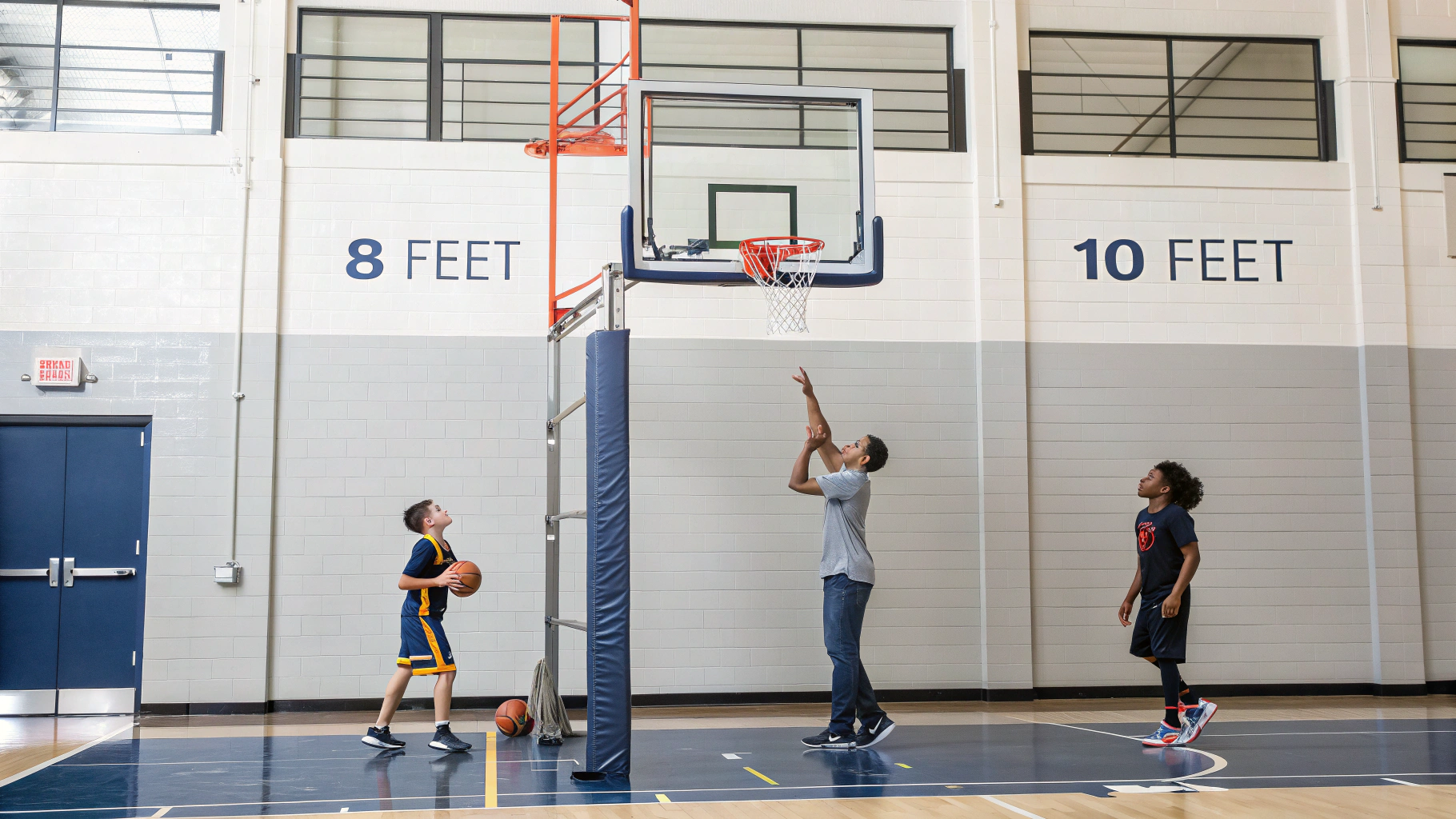This guide provides a comprehensive examination of basketball hoop height specifications, standards, and practical considerations. It delves into historical contexts, official regulations, and details every key component. It explores variations based on international, regional, and age-specific standards, offering practical advice on selection and setup. Additionally, it addresses frequently asked questions and provides best practices for optimizing play, all formatted for easy accessibility and understanding.
Introduction
Basketball, a sport invented by Dr. James Naismith in 1891, has grown into a global phenomenon with set rules and standards that ensure consistency and fairness in play globally. The height of the basketball hoop is a critical aspect of these standards. Initially set at ten feet—owing to the height of the running track's balcony where the first basket was placed—the regulation hoop height has become a crucial factor in the integrity of the game.
Specifications and standards are integral to basketball for several reasons. They ensure a level playing field, allowing athletes to compete under consistent conditions, which is vital for fair play and the accurate assessment of skill. Official regulations govern aspects ranging from hoop height to court markings, as seen in guidelines provided by bodies like the International Basketball Federation (FIBA) and the National Basketball Association (NBA).
Standard Measurements & Specifications
Basketball hoop height specifications vary slightly based on the level of play. The following table outlines standard measurements, providing both metric and imperial units for convenience.
| Level | Height (feet) | Height (meters) | Rim Diameter (inches) | Rim Diameter (cm) |
|---|---|---|---|---|
| Professional (NBA, FIBA) | 10 | 3.05 | 18 | 45.72 |
| Amateur | 10 | 3.05 | 18 | 45.72 |
| Youth (under 12) | 8 | 2.44 | 18 | 45.72 |
For visual descriptions, consider that the basketball rim is circular with an inner diameter of approximately 18 inches (45.72 cm). The backboard is situated behind it, measuring 6 feet (1.83 meters) wide by 3.5 feet (1.07 meters) tall in professional play.
Understanding Key Components
The basketball hoop's components are designed to withstand significant stress and usage. They include:
- Rim: Typically made of solid steel, the rim must be durable enough to handle dunks and shots.
- Backboard: Constructed from tempered glass, fiberglass, or acrylic, ensuring both rigidity and transparency. The surface should be smooth and shatter-resistant.
- Net: Crafted from nylon or metal chain, the net helps to provide visual feedback when a basket is made.
Essential court markings include:
- Three-point Line: Defines the boundary for three-point shots. The NBA specifies a distance of 23.75 feet (7.24 meters) from the basket; in FIBA, it is 22.15 feet (6.75 meters).
- Free-Throw Line: Placed 15 feet (4.57 meters) from the basket.
Different Variations
Basketball standards can vary significantly:
- International Standards: Governed by FIBA, which slightly alters court dimensions and three-point ranges.
- Regional Differences: Some regions may adapt rules to better fit local traditions or indoor/outdoor settings.
- Competition vs. Recreational Specifications: Recreational play might adjust dimensions and hoop heights for casual play and youth leagues.
- Age-group Modifications: Hoop height for youth leagues is often lowered to 8 feet to accommodate developing skills.
Practical Considerations
Building a basketball setup requires attention to space, installation, and upkeep.
- Space Requirements: Ensure enough space for safe play, adhering to official court dimensions—94 by 50 feet (28.65 by 15.24 meters) for professional courts.
- Setup Guidelines: Proper installation is needed to maintain accurate hoop height and stability. Follow manufacturer instructions and use robust mounting setups.
- Maintenance Tips: Regularly check for rust or wear and tear on rims and backboards. Ensure the net is secure and replace it when worn.
- Common Mistakes: Avoid improper mounting heights, incorrect backboard positioning, uneven court surfaces, and neglecting routine maintenance.
Selection Guide (for equipment)
Choosing the right equipment involves several factors:
- Key Factors: Consider durability, adjustability (for youth), material quality, and ease of installation.
- Recommendations for Different Skill Levels: Beginners might start with adjustable hoops, while advanced players require regulation-grade setups.
- Budget Considerations: Higher quality often means higher cost, so balance between price and need.
- Popular Brands: Spalding and Lifetime are well-regarded for their robust and versatile basketball hoop solutions.
FAQs
Here are answers to common questions regarding basketball hoop heights and specifications:
- What is the standard height for a basketball hoop?
For both professional and amateur play, it is set at 10 feet (3.05 meters). - How does hoop height affect gameplay?
The height challenges players' skill levels, impacting shooting accuracy and strategic play. - Why are there different hoop heights for youth leagues?
Lower heights, like 8 feet for younger players, accommodate their developmental stages, ensuring shots are feasible and rewarding. - Can I adjust the hoop height for home use?
Yes, many hoops are adjustable, which is beneficial for families with children of different ages. - What materials should I choose for outdoor setups?
Weather-resistant materials like powder-coated steel for the rim and polyethylene for backboards are ideal.
Tips and Best Practices
For optimal performance and safety:
- Professional Recommendations: Install facilities according to official specifications to accurately simulate real-game situations.
- Safety Considerations: Inspect equipment regularly for stability and sharp edges, and ensure the playing area is clear of debris.
- Optimization Suggestions: Use proper lighting for evening play and maintain a clean court surface for safety and performance enhancement.
- Expert Insights: Consult with local sports authorities to ensure compliance with regional regulations and to receive advice on maintenance best practices.
In conclusion, understanding and adhering to basketball hoop height guidelines is critical for fair and effective play, regardless of level or location. This guide offers comprehensive insights into the necessary standards and practical advice for selection, installation, and maintenance. By following these outlined practices, both beginners and experienced players can ensure a beneficial and safe basketball experience.











 浙公网安备
33010002000092号
浙公网安备
33010002000092号 浙B2-20120091-4
浙B2-20120091-4